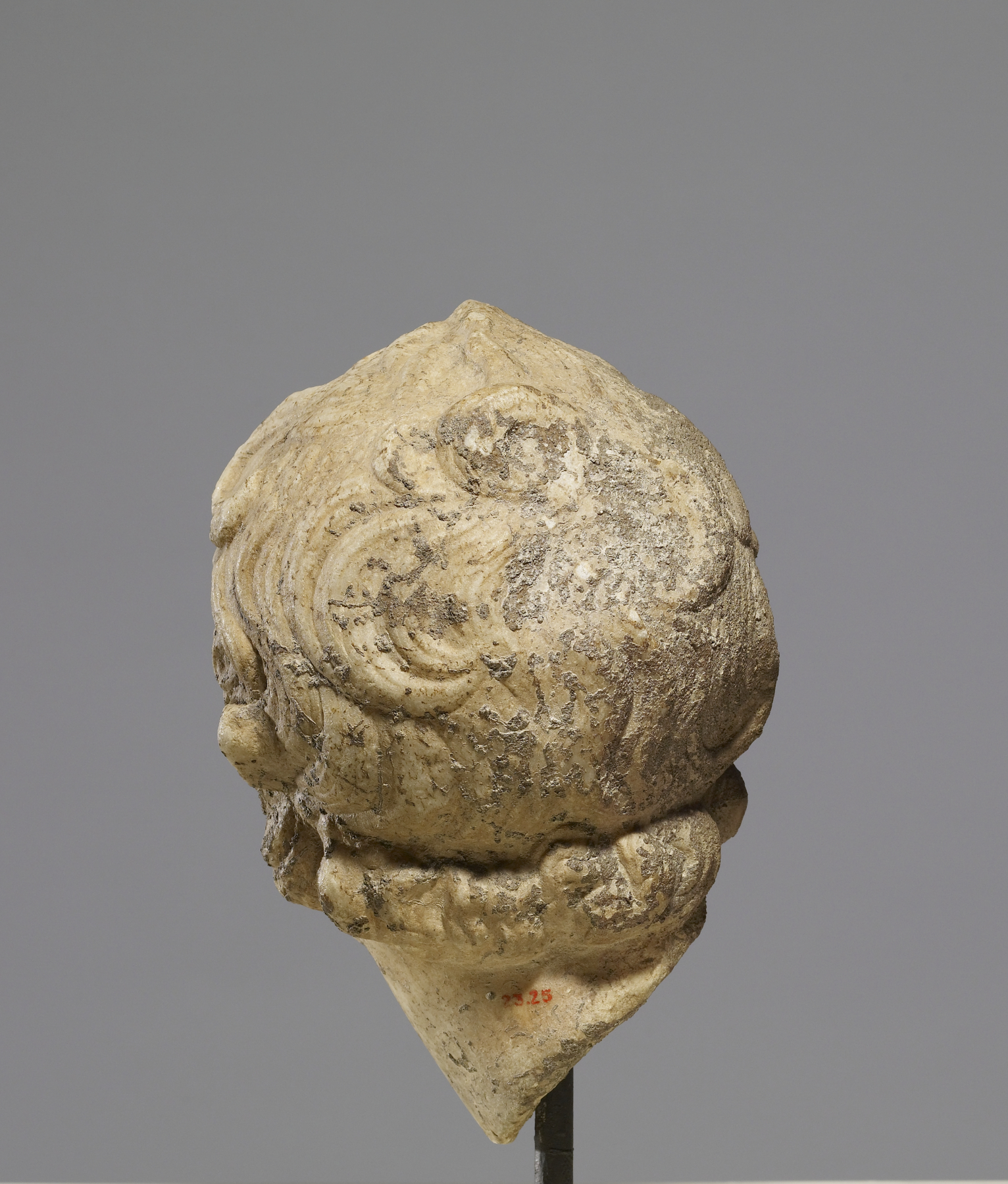Head of Eros
The delicate modeling of this piece makes it one of the finest surviving copies of the Eros from the sanctuary at Thespiae by the celebrated master sculptor Lysippus. In that statue, Eros was shown stringing his bow, his head turned to one side with a dreamy, distracted look. The sweetness of the statue's expression looks forward to the Hellenistic fascination with children's faces.
Provenance
Provenance (from the French provenir, 'to come from/forth') is the chronology of the ownership, custody, or location of a historical object. Learn more about provenance at the Walters.
Canessa, New York, Paris, and Naples, [date and mode of acquisition unknown] [said to be from Capua]; Henry Walters, Baltimore, 1917, by purchase; Walters Art Museum, 1931, by bequest.
Exhibitions
| 1988-1989 | From Alexander to Cleopatra: Greek Art of the Hellenistic Age. The Walters Art Gallery, Baltimore. |
Conservation
| Date | Description | Narrative |
|---|---|---|
| 6/21/1961 | Treatment | cleaned |
| 6/23/1961 | Treatment | cleaned |
| 7/6/1970 | Treatment | cleaned |
| 2/4/1987 | Treatment | other |
| 1/1/1992 | Technical Report | x-ray diffraction; other |
Geographies
Mediterranean (Place of Origin)
Measurements
H: 10 3/16 x W: 6 5/8 x D: 7 3/8 in. (25.8 x 16.8 x 18.8 cm)
Credit Line
Acquired by Henry Walters, 1917
Location in Museum
Not on view
Accession Number
In libraries, galleries, museums, and archives, an accession number is a unique identifier assigned to each object in the collection.
In libraries, galleries, museums, and archives, an accession number is a unique identifier assigned to each object in the collection.
23.25










